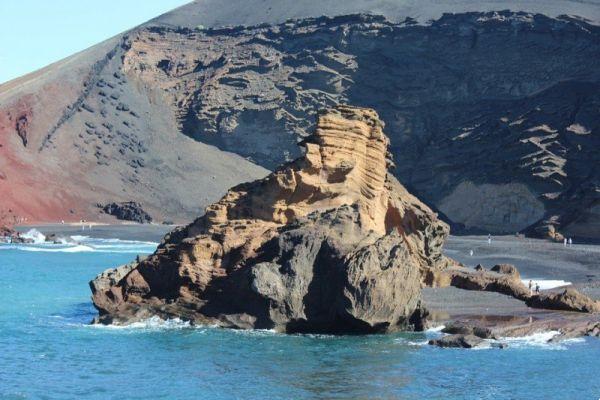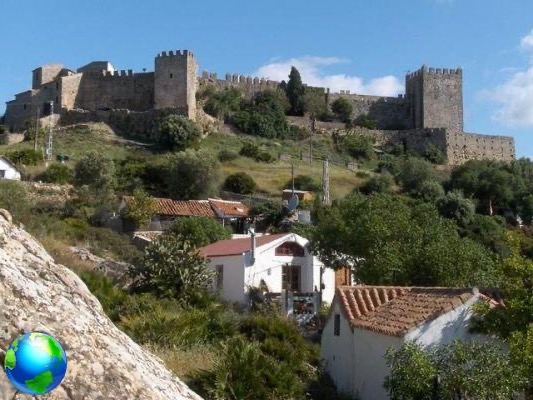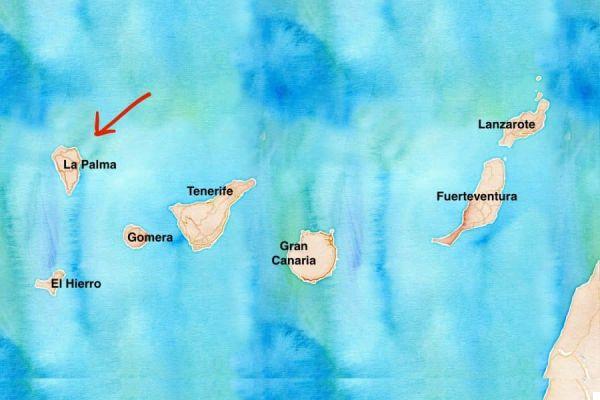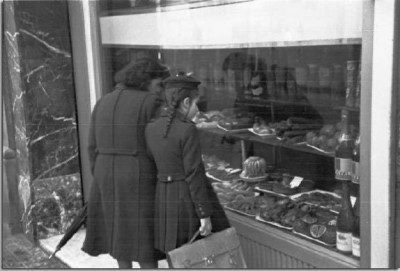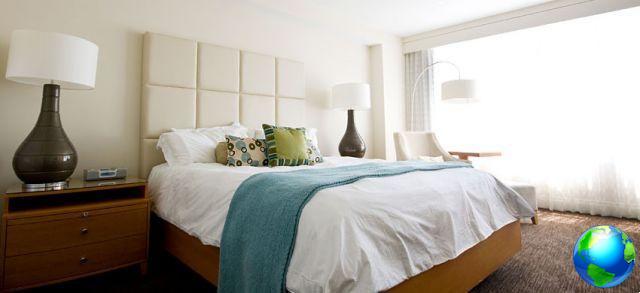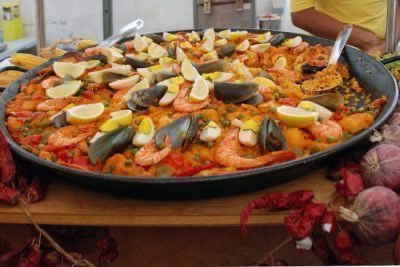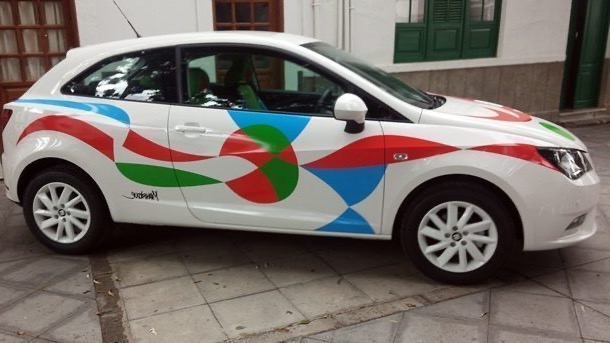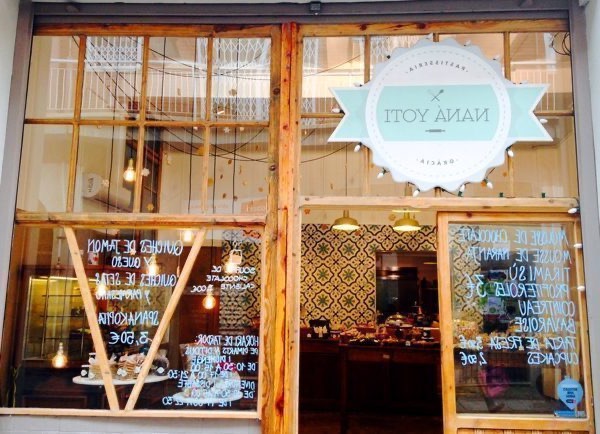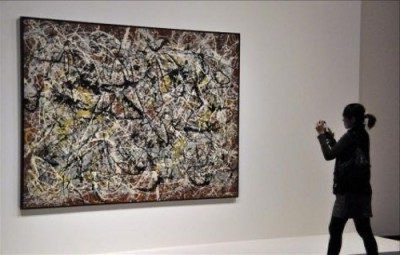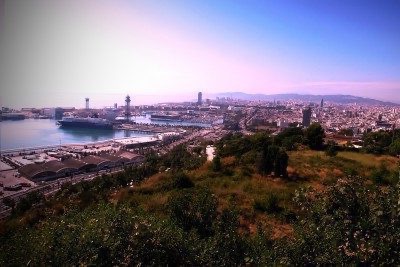
A Barcelona a place to spend pleasant hours all year round, away from urban pressure, enjoying clean air, woods, green spaces, panoramic points, suggestive perspective views, cultural institutions and sports facilities and then of nature is definitely Montjuic and all this is possible with Barcelona Slow.
Il Montjuic park it is one of the most characteristic places in Barcelona, where changes are constantly happening. Montjuic rises a few meters from the port up to 173 mt. in height and dominates the entire city. Since ancient times, due to its privileged location and its natural and environmental characteristics that make it an enchanting and unique place, it has been used as a strategic point and venue for important socio-cultural events. It is a place of landscape and meeting importance, however culture, sport and free time in contact with nature. The topography and vegetation make up an attractive landscape in itself, plus the offer of socio-cultural and sporting services. The integration of artificiality and nature, architecture and landscape, in the atmosphere that the visitor perceives while walking in the spontaneous and orderly nature, gives the park an engaging harmony and a particular charm. Also, give it countless scenic spots you can explore the city from above, as well as the mountains and the sea until you lose the view on the horizon, all of which makes Montjuïc a unmissable destination if you are passing through Barcelona.
Il Tour di Barcelona Slow It offers a walk through the park, without haste, taking all the time it takes to visit some of the most famous places in Montjuïc, but also and above all to discover and explore the more unusual and less frequented ones, enjoying the tranquility of the place, the beauty of the natural landscape and of the overview of the city, perceiving the smells, resting in the shade of the trees, knowing and discovering the history of the place and its transformations. The visit starts from Joan Brossa Gardens, at the exit of the Montjuïc funicular, opposite the Picornell pools, site of the water competitions during the 1992 Olympics, from which you can enjoy a unique panoramic view, and ends at the Ludwig Mies van der Rohe Pavilion, near Plaza de Espanya, passing by the Mirador de l'Alcalde and the Passeig dels Cims, which leads to the highest point of Montjuïc. From there begins a slow, pleasant and gentle descent towards the north west side of the park, passing through the Botanical Garden, the Olympic Ring, the Mirò Foundation and the MNAC (National Art Museum of Catalunya).
From the Joan Brossa Gardens the walk begins towards the top of Montjuïc, climbing up the dirt paths, the ramps and the stone stairways, in the shade of a Mediterranean scrub forest (pines, aromatic plants, such as lavender and rosemary), and crossing seats and intimate spaces, equipped areas, play areas for children and panoramic points. Going up, it is possible to contemplate the natural landscape of the Giardini, the city and the mountains from above. But above all, the silence and mixing of smells of the luxuriant nature. These Gardens are an excellent example of landscape and environmental recovery of a space previously occupied by an attraction park, through the consolidation of the existing plant landscape and the enhancement of the natural and wild aspect of the place.
At the exit of the Joan Brossa Gardens you will find the Mirador de l'Alcalde, an excellent vantage point to observe the city from above and its constant metamorphosis, as well as the natural coastal and mountainous landscape that surrounds it. This belvedere is characteristic for the flooring, a ceramic mosaic, pieces of iron and pieces of glass bottles, as well as for the water tanks and fountains, which make the place pleasant, both on a microclimatic and sensorial level.
From the Alcalde viewpoint the walk continues under the shade of the pleasant pine forest of Camí dels Cims, a path that winds along the north-eastern side of Montjuïc, the one with the steepest profile and that runs along the sea. Going through it, the sensation of being in a Mediterranean landscape of coast. The trail leads to the summit of Montjuïc, where the Castle, built in 1640 on the remains of an ancient watchtower. The Castle, seat of the prison politician during Franco's dictatorship, in 2007 it was appointed as the seat of the International Center for Peace and today it is a place for organizing aggregating and interesting socio-cultural events.
The path continues along the Cami del Mar, a quiet path, not very popular, which runs along the Castle on one side and the sea on the other. The vegetation is typically Mediterranean, pines and Mediterranean scrub on the steep slope on the sea side, prickly pears and fig trees. Along this route it is possible to enjoy spectacular views and the pleasant sea breeze. The natural and environmental characteristics give the sensation of walking a path of a romantic and wild coastal landscape. The walk ends in a forest of oak, ash and pine trees. Here you can enjoy the shade of an enchanting pine forest, sipping a caña (beer) in a small bar set up, where you always listen to good background music.
Once you reach the top, the slow and gentle descent begins towards the northwest side of Montjuïc, towards the Botanical Garden, a reference center for the conservation of the Mediterranean flora. The Botanical Garden, inaugurated in 1999, covers an area of 14 hectares, and is one of the great green spaces in the city. Located on a place of great environmental and landscape complexity due to the presence of ancient quarries, pronounced slopes and differences in height, the project is based on the design of a triangular mesh, which adapts to the terrain and which organizes the itineraries and allows the harmonious distribution of vegetation unit. It offers magnificent views of the delta of the Llobregat river, the Olympic Ring and much of the metropolitan area of Barcelona and the mountains in the background.
Leaving the Botanical Garden, the walk continues to theOlympic Ring, which houses different sports facilities, some of these of great architectural interest. This structure is the result of renovation and new construction works carried out on the occasion of the 1992 Olympics. It is one of the symbols of architectural revival of Barcelona which took place within the Olympics, after a long period of urban and architectural political decline under Franco's government. This installation is easily located from all over Montjuïc, due to the tall and elegant structure of the Calatrava Tower, which has now become an unmistakable symbol of Montjuïc. During the walk you can admire from the outside the first public institution in Barcelona, opened in 1975, with the desire to spread culture with respect to contemporary art.
from Mirò Foundation, the path continues for i Gardens of Labiral, a two-hectare park transformed by the French landscape architect Claude Nicolas Forestier in 1915 from agricultural terracing into a beautiful garden that has maintained this characteristic agro-romantic. An exceptional place, built in Moorish style, full of flowers, different plant species, waterfalls, pergolas, polychrome stone and ceramic seats, which give this place an intimate and pleasant character. The cascades of water, which is the predominant element, helps to create a perfect microclimate and a pleasant sound environment. Also from here you can enjoy the panoramic view of the mountains, the lush vegetation of the lower levels, and the MNAC.
At the exit from the Gardens of Laboral, a curious escalator, but which at this point of the walk could also be of comfort, leads to the most important work of theInternational Exhibition from 1929, the National Palace, at the time the main seat of the Exhibition. Monumental, ornate, a pastiche of different styles. Renovated in 1985 by the Italian architect Gae Aulenti, is now home to the museum of Catalan art (MNAC). Of particular interest is the overview of the city and the Tibidabo. Going down the monumental staircase you reach the German Pavilion by Ludwid Mies van der Rohe.
The tour ends here, in front of one of the fundamental buildings of modern architecture, built in 1929 for theInternational Exhibition of Barcelona, dismantled the following year and rebuilt between 1983 and 1986. Even for those who are not passionate about architecture, it will be impossible not to be fascinated by the elegance of the forms and by the enchantment of the plays of light that are created between the marble and travertine surfaces.
Barcelona Slow is a project of sustainable tourism to visit the city through guided itineraries.
Each itinerary is proposed as an experience to discover Barcelona on foot, without haste or any kind of pressure, relating to the people spaces and urban rhythms. The urban walk is an opportunity to immerse yourself in architecture and green spaces, to appropriate the identity, memory and history of the places, and to discover all those things that allow us to fully understand a new city.
It is an activity that is good for the mind, body and also for the urban landscape, because it allows to decongest the areas crossed by traditional tourist flows. It is a flexible and free practice, because although the itineraries are structured, they can be customized according to the visitor's interests, and above all, it is economically sustainable.
For a guided tour they are asked 4 € or 8 € in relation to the proposed itinerary






